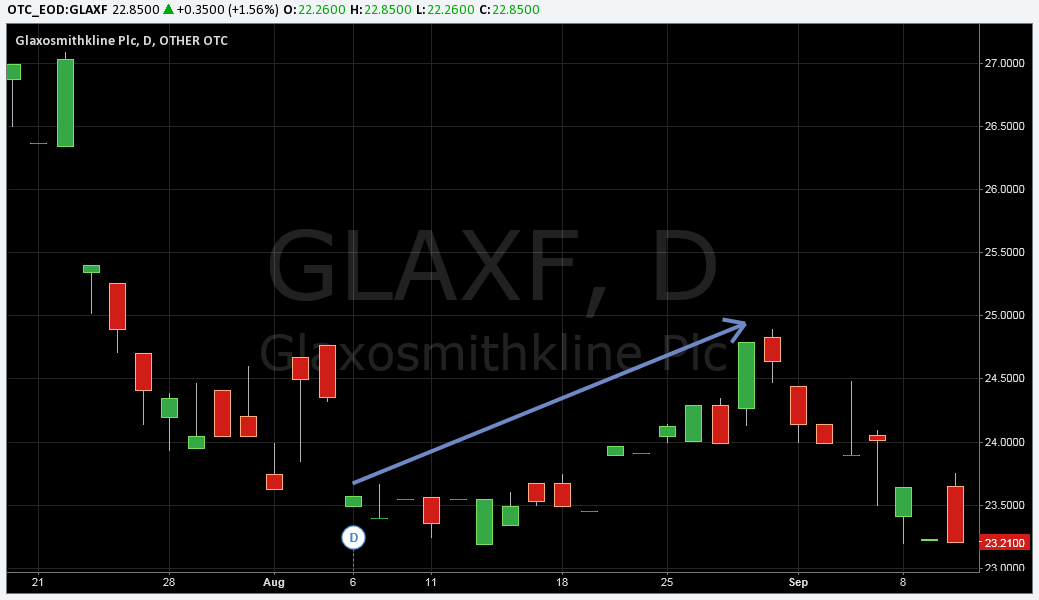Costs of CFD Trading
The costs of CFD trading involve the commission charged by the broker (usually 0.1%), a financing cost if you buy assets and the spread, i.e. the difference between the bid and offer prices at the time you trade. There is usually no commission charge for trading forex pairs or commodities and in this case, the spread represents the cost of the CFD. There also may be a funding cost or interest received as well. Long positions entail financing costs, while short positions earn interest.
For an example of the costs of trading CFDs, suppose a trader wants to buy CFDs related to the share price of GlaxoSmithKline. The trader wants to place a £10,000 trade, with an expectation of the share price increasing to £24.80 per share. The current price is £23.50. The bid offer spread is 23.48-23.50.
You would pay 0.1% commission on opening the position and another 0.1% when the position is closed. Also, for a long position you will be charged overnight, normally the LIBOR interest rate plus 2.5%. This is known as the financing charge, as the overnight positions for the product are considered an investment and the provider has lent the trader money to buy the asset.
The trader can buy 426 contracts at £23.48 per share, which amounts to a trading position of £10,002.48. If margin requirement is 10%, then you would deposit £1,000.25. Suppose the share price of GlaxoSmithKline increases to £24.80 in 16 days. The initial value of the trade is £10,002.48 but the final value is £10,564.80. The increase in the GlaxoSmithKline share price is shown in the graph below, indicated by the upward sloping arrow.

Past performance is no indication of future results.
The profit before charges and commission is 10,564.80 – 10,002.48 = £562.32.
Then on opening the position, you have to pay 0.1% commission, which equals to £10.
Since it is a long position, interest charges are made on each of the 16 days. Suppose the interest charged is 7.5%.
Then the daily interest charge is:
426 times £23.48 times 0.075/365 = £2.06
Then since the position is open for 16 days, the total interest charge is:
16 times £2.06 = £32.89
Then once the position is closed, another 0.1% is taken as commission, which is equal to £10.
Therefore the overall net profit is equal to profits minus charges, which is
526.32 – 10 – 32.89 – 10 = £473.43
The return on capital employed is £473.43/£1,000.25 = 47.33%
If buying shares rather than CFDs for this particular trade, the costs would be slightly different. Say we purchase 426 shares at £23.48, this would require an initial capital outlay of £10,002.50 plus a stamp duty charge of 0.5%. This costs £5.00 for this trade plus the £10 charge. If you then sold at £24.80, then you would have £10,564.80. You would have made a higher amount, £547.30, but you had to risk all of your capital. Per £1,000, the share trade profit was £46.73, while for the CFD trade £1,000 was risked to make £473.43. Generally, CFD trading is more profitable over the short-term than shares trading, as the overnight financing costs will start to eat at profits over the longer term, i.e. 90 days or more.


